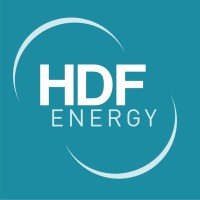Fortescue Future Industries plans to convert coal infrastructure for green hydrogen production in North America
Repurposing existing fossil fuel infrastructure to create green hydrogen to power the world is part of the solution to saving the planet.

Fortescue Future Industries (FFI) today (13th May) announced it would evaluate the feasibility of converting the former Centralia coal mine into a green hydrogen production facility after entering into a binding exclusivity agreement with the Industrial Park at TransAlta (IPAT) in Washington, US.
The proposed FFI green hydrogen production plant would enable the decarbonisation of hard-to-abate sectors of the North American economy and support the development of a Pacific Northwest green hydrogen hub, potentially creating hundreds of new local jobs.
The Centralia coal-fired power plant adjacent to the IPAT project site is scheduled to close in 2025. Subject to the outcome of the feasibility studies, FFI’s intention would be to seek to employ the existing coal workforce for the proposed project, facilitating a transition into the emerging green energy economy.
Chairman and Founder of FFI Dr Andrew Forrest, said, “FFI’s goal is to turn North America into a leading global green energy heartland and create thousands of green jobs now and more in the future.
FFI has been working with the Lewis County Energy Innovation Coalition and Lewis Economic Alliance to undertake due diligence efforts on the project to date.
Richard DeBolt, Executive Director of the Lewis Economic Alliance, said, “With the closing of the coal mine and the scheduled retirement of the Centralia coal-fired power plant, IPAT was formed to redevelop the site and attract investment that will support well-paid, long-term employment opportunities in the region. FFI’s potential project represents the opportunity to do just that.”
FFI also today announced that it would apply for a US Department of Energy (DOE) Hydrogen Hub Program grant in collaboration with Pacific Northwest stakeholders. The Hydrogen Hub Program was enacted under the Bipartisan Infrastructure Law and is being implemented by the DOE.
Chief Executive Officer of FFI North America, Paul Browning, said, “The electric power grid of the Pacific Northwest is one of the lowest carbon power grids in the world and can be used to produce green hydrogen, and could extend the region’s low carbon leadership to hard to electrify sectors like long-haul trucking, ports, aviation, and heavy industry.”
Pacific Northwest stakeholders that FFI is collaborating with include Puget Sound Energy, Washington Maritime Blue, Twin Transit and the Lewis County Energy Innovation Coalition. FFI welcomes the opportunity to work with additional stakeholders to support the development of a Pacific Northwest Hydrogen Hub.
Josh Jacobs, VP of Clean Energy Strategy, Puget Sound Energy, said, “Our aspirational Beyond Net Zero Carbon initiative requires that we deploy innovative decarbonisation technologies like green hydrogen. We look forward to taking this important work forward.”
Jennifer States, VP of Projects and Strategy, Washington Maritime Blue, said, “The hydrogen production envisioned by the proposed project represents the kind of scale needed to transform our port and maritime sector by delivering zero-emission fueling alternatives. This is the next step in what our Build Back Blue consortium laid the foundation for in our proposal to the US Economic Development Administration.”
It is well-aligned with the DOE Hydrogen Hub and can help Pacific Northwest Hydrogen Association build up the potential project pipeline for achieving our clean energy transition.
FFI is progressing discussions with the Lewis County Energy Innovation Coalition to investigate developing hydrogen applications in the Centralia-Chehalis twin cities. This includes working with bus transit operator, Twin Transit, to decarbonise commuter buses and other heavy transport operations.
Joe Clark, Executive Director of Twin Transit said, “Green hydrogen has the potential to decarbonise our transit operations safely and efficiently. Our central location on the I-5 corridor means the development of hydrogen infrastructure in Centralia can decarbonise the key North-South transport corridor in the Northwest and provide distribution of hydrogen across the region.”
